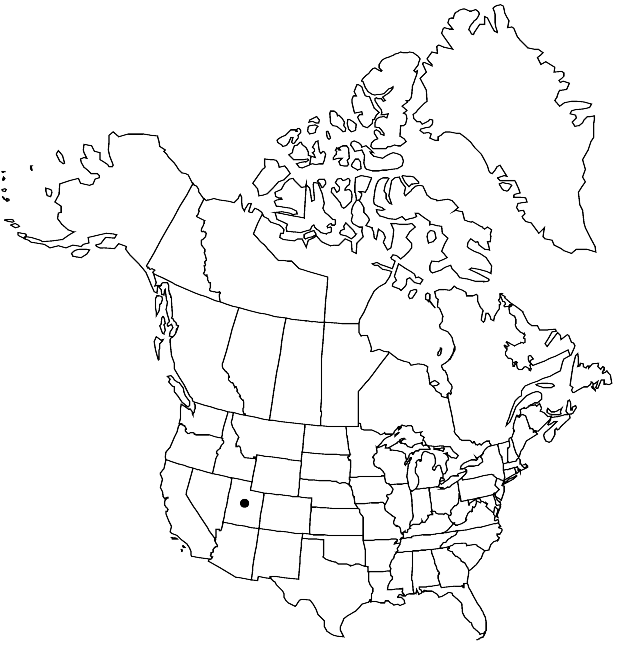Thelypodium rollinsii
Contr. Gray Herb. 204: 97, plates, figs. 1973.
Biennials; glaucous, glabrous throughout. Stems branched distally, (4–)6–16(–20) dm. Basal leaves: petiole 0.5–1.3(–1.5) cm, not ciliate; blade spatulate or oblanceolate to obovate, 1.3–4(–7) cm × (4–)6–13(–18) mm, margins usually dentate to repand, rarely entire. Cauline leaves (erect, appressed to stem at least partly); sessile; blade linear to linear-lanceolate, (1.8–)1.3–4.5(–6) cm × (1–)1.7–7(–8) mm, (base auriculate or sagittate), margins entire. Racemes dense, terminal not elongated in fruit, (flower buds narrowly oblong). Fruiting pedicels usually horizontal to divaricate, rarely divaricate-ascending, straight, slender, (6–)7–14(–18) mm, often not flattened at base. Flowers: sepals erect, usually linear to linear-oblong, rarely oblong, 4–6(–7) × (0.8–)1–1.5 mm; petals lavender to purple, spatulate to obovate or oblong, (6–)7–9.5(–12) × (1.2–)1.5–2(–3) mm, margins not crisped, claw differentiated from blade, [slender, 3–4.5(–5.5) mm, narrowest at base]; nectar glands confluent, subtending bases of stamens; filaments tetradynamous, median pairs (5–)5.5–7.5(–8.5) mm, lateral pair (4–)5–6.5(7.5) mm; anthers exserted, linear to linear-oblong, 2–3(–4) mm, not circinately coiled; gynophore 0.5–2.5(–6) mm. Fruits erect distally, slightly torulose, usually strongly incurved, (overtopping buds), rarely straight and divaricate-ascending, terete, (1.8–)2.8–5(–6.3) cm × 0.7–1 mm; ovules 52–70 per ovary; style cylindrical, (0.5–)0.8–1.5(–2) mm. Seeds 1–1.3(–1.5) × 0.5–0.6(–0.8) mm. 2n = 26.
Phenology: Flowering Jun–Aug.
Habitat: Alkaline flats
Elevation: 1500-2000 m
Discussion
Thelypodium rollinsii is restricted mostly to Beaver, Carbon, Juab, Millard, Piute, Sanpete, and Sevier counties.
Selected References
None.
